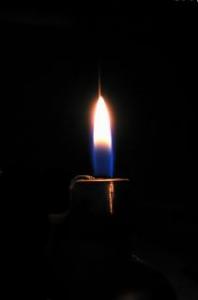
First thing last Wednesday morning, presentations were underway in the Energy Efficiency, Challenges and Solutions Session. This session started out with the presentation:
A Small Fraction of the USA Biomass Resource Would Meet 100% of National Transportation Fuel Needs
It was presented by Joseph Rollin of Virginia Polytechnic Institute and State University. As conveyed by the title, Rollin showed that the biomass available in the United States was more than enough to satisfy our national transportation needs. With a predicted 1.3 billion tons of dry biomass available in the US by 2050, Rollin discussed the feasibility of a SyPaB Fuel Cell Vehicle (SFCV). In this particular vehicle, the process could use sugar almost directly (without the conversion processes we use in normal gasoline vehicles to release the energy stored in the high energy density fuels). Sugar is a feasible high energy density hydrogen carrier--not just the major ingredient in your favorite candy! He went on to discuss how carbohydrates as a fuel source have cheaper carrying costs than conventional fuels and also yield less ill effects. Next up was Ludovico Cademartiri of Harvard University presenting:

A New Principle for the Direct Application of Force to a Flame
Chock full of video and moving graphs, Cademartiri's presentation was the most illustrative that this author has seen so far during the Annual Meeting. Fire sometimes has the reputation of being an act of nature or a nearly unstoppable and very destructive force--just think of all the wildfires out west that take weeks or months to get under control. Combustion chemistry is very complex and includes interactions between mass transfer, heat transfer and reaction kinetics. Though each of these are understood and documented very well separately, the finer points of their interaction with each other are not quite as well known. In this presentation Cademartiri showed how he used voltage and frequency manipulation to control the behavior of a flame. With this research, one could direct the heat of a flame, suppress a flame (an application of 30kV displaces the flame right off the burner - an extremely quick snuffing), or inhibit flame propagation (the video showed a flame with an E field applied that did not ignite a methane burner--removal of the field resulted in immediate ignition).
Ash Emittance Characterization
Ash Emittance Characterization presented by Alex Romriell of Brigham Young University followed. He spoke about the real-life problem of ash build up on the interior walls of industrial boilers and investigated different types of fuels and the emittance of the different types of ash buildup and their impact on boiler efficiency. Boiler sizing should take into consideration the fuel that a plant plans to burn and the emittance of the ash buildup that will result from the use of that fuel as this will negatively impact the steam generation of the boiler.
Chemical Looping Strategy and Its Novel, Exergetically Optimized Applications in Fossil Energy Conversions
Fanxing Li of The Ohio State University took the podium next with his presentation Chemical Looping Strategy and Its Novel, Exergetically Optimized Applications in Fossil Energy Conversions. Li spoke about the Coal/Biomass Direct Chemical Looping process (CDCL)--a different kind of gasification strategy that is appealing because of its 100% CO2 capture. He showed several Exergy analyses that showed far less exergy losses in a CDCL system than in the conventional gasification process. Li went on to discuss some future investigative possibilities including a CDCL-CO2 Hydrogenation process and a CDCL-SOFC (Solid Oxide Fuel Cell) process which would integrate the oxidizer with the fuel cell anode. Models of these possibilities showed less net work/exergy necessary to run a CDCL process than a conventional Coal-to-Liquid (CTL) process and a higher efficiency then conventional Integrated Gasification Combined Cycle (IGCC) processes.
Exergy Analysis of a Single-Stage Mixed Refrigerant LNG Process
Next Danahe Marmolejo-Correa of the Norwegian University of Science and Technology presented her Exergy Analysis of a Single-Stage Mixed Refrigerant LNG Process. Marmolejo-Correa discussed and compared two exergy efficiency definitions to discuss a Mixed Refriderant Process (MRP) for Liquified Natural Gas (LNG) production. The MRP model for exergy analysis consisted of a two-stage compressor, a condenser, a heat exchanger and a throttle valve. The calculated values for chemical exergy and thermo-mechanical exergy differed for the system and seemed quite small - this was due to self-cooling of the refridgerant. Marmolejo-Correa suggested that modifications should be done to the heat exchanger as well as adding expansion valves with liquid expanders to the system to increase exergy efficiency.
Energy Saving Design Methodology of Preheating Section for Gas Membrane Separation based on Self-Heat Recuperation
Finishing off the session, Yasuki Kansha of the Institute of Industrial Science at The University of Tokyo presented Energy Saving Design Methodology of Preheating Section for Gas Membrane Separation based on Self-Heat Recuperation. Kansha analyzed a gas membrane separation process and the amount of energy necessary to run a conventional membrane process, a conventional heat recovery process (with preheating) and a self-heating recuperation process. The Conventional membrane process model required 8.117kW total with the main contribution coming from the pump. The Self-heating process model reduced that to 1.98 kW utilizing compressors on the effluent streams and passing the compressed effluent through a heat exchanger with a feed stream.


